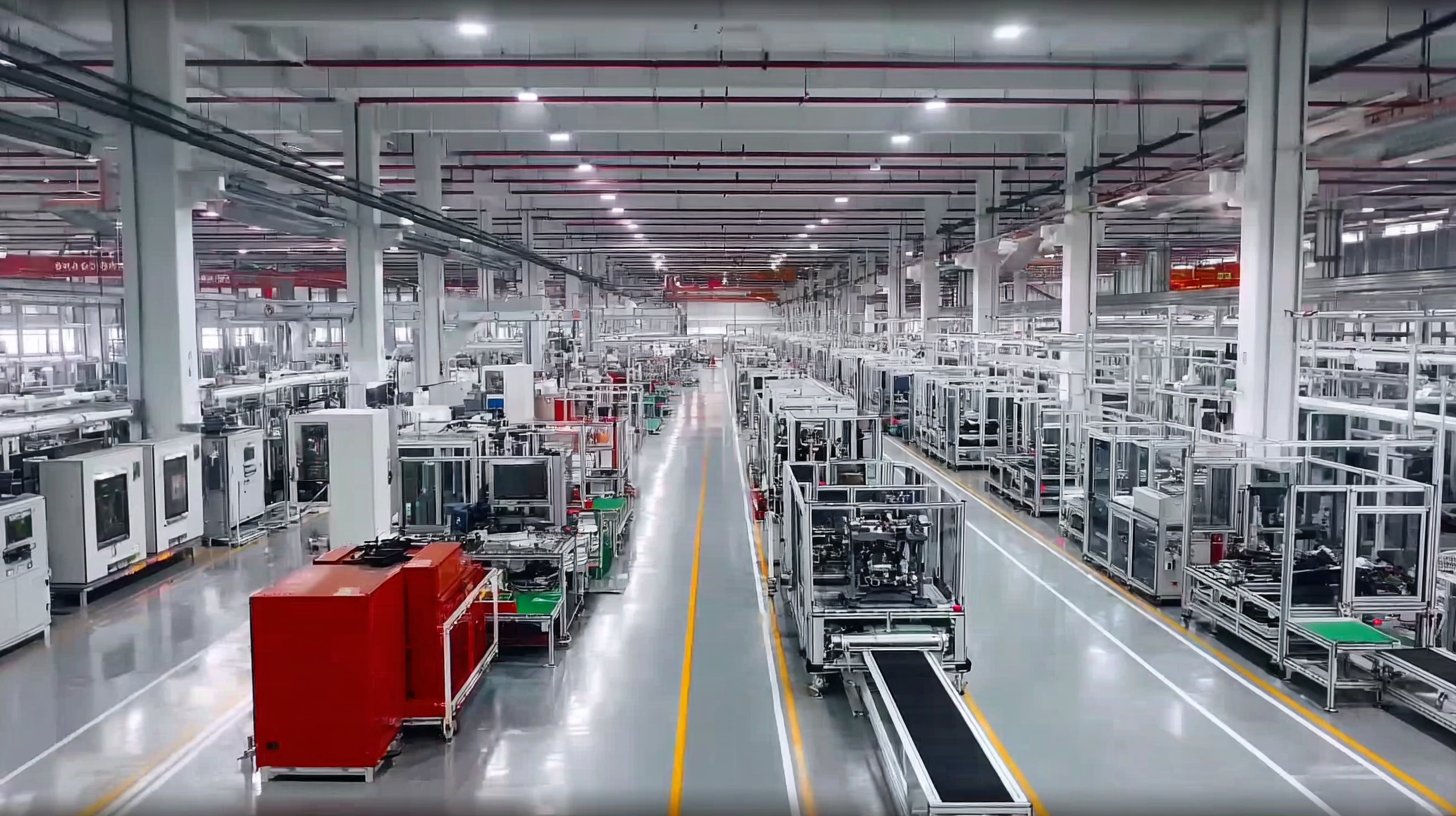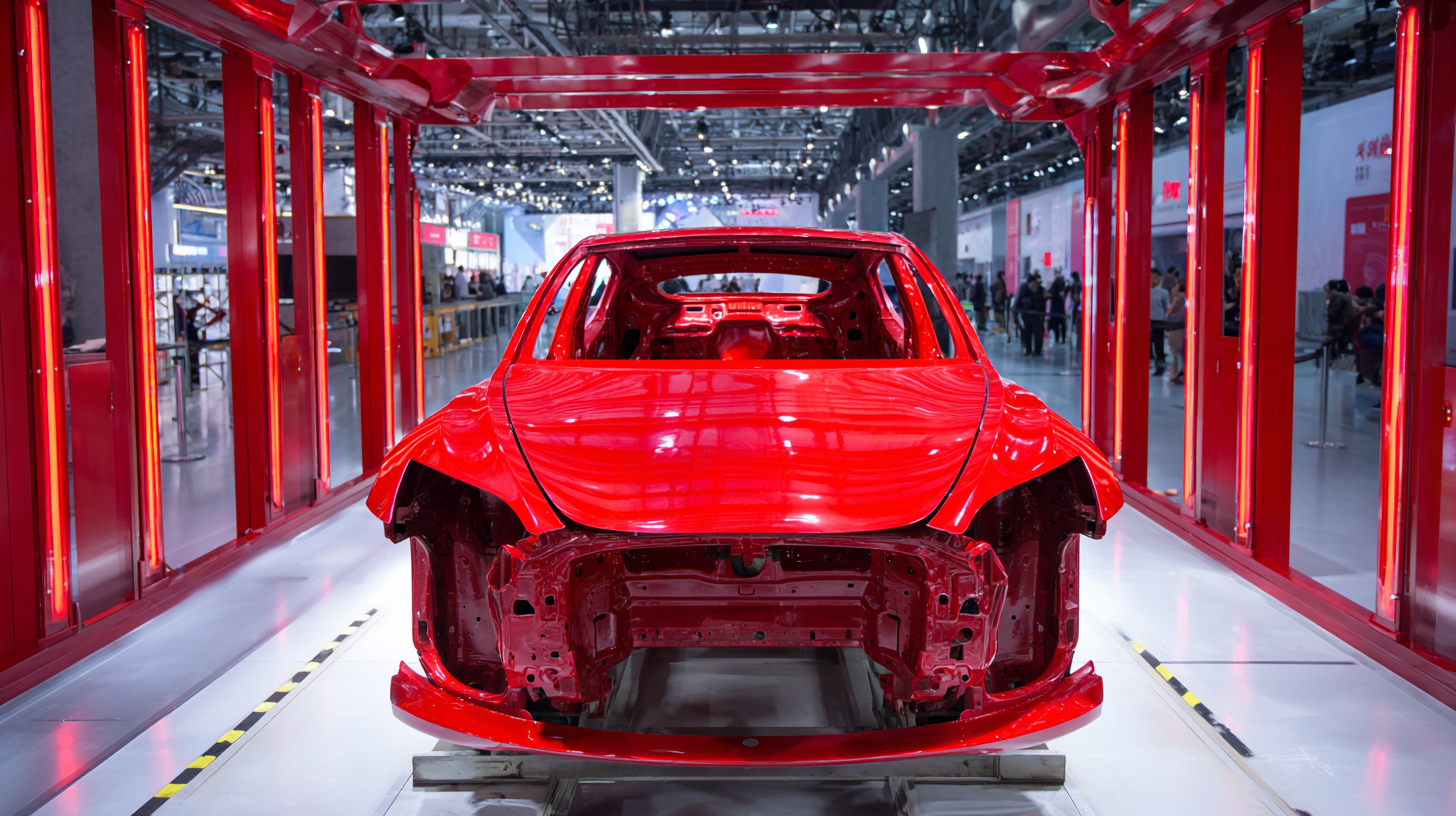
Unveiling the Excellence of Top Chinese Manufacturing with Global Influence
In recent years, China has emerged as a formidable force in global manufacturing, redefining standards of excellence and innovation. The nation’s ability to produce a wide array of goods—from electronics to textiles—has not only fueled its own economic growth but has also influenced industries worldwide. This blog aims to unveil the intricacies of top Chinese manufacturing practices while exploring the methodologies that have propelled these companies to global prominence. By examining the “how-to” aspects of China's manufacturing excellence, we will delve into the strategies, technologies, and workforce dynamics that contribute to the unmatched quality and efficiency of Chinese products.

As we navigate through the landscape of this manufacturing powerhouse, readers will gain valuable insights into how China’s manufacturing engine continues to shape the global market and set new benchmarks for quality and innovation.
The Significance of Industry Production Standards in Chinese Manufacturing
The Chinese manufacturing industry has witnessed remarkable growth, becoming a global powerhouse that influences various sectors worldwide. Central to this excellence is the significance of industry production standards. These standards serve as benchmarks that ensure quality, safety, and efficiency in manufacturing practices. By adhering to international standards, Chinese manufacturers can enhance their competitiveness and foster trust in their products, paving the way for smoother trade relations with global partners.
To elevate production standards in your manufacturing endeavors, consider implementing these tips: First, invest in regular training programs for your workforce to keep them updated on the latest industry standards and best practices. Secondly, establish a robust quality management system to monitor compliance with production standards. This not only helps in minimizing defects but also boosts overall productivity. Lastly, encourage a culture of continuous improvement within your organization, where feedback and innovation are welcomed and implemented.
As Chinese manufacturing continues to evolve, the commitment to maintaining high production standards will undoubtedly play a crucial role in sustaining its influential position on the global stage. Emphasizing these standards not only benefits manufacturers but also enhances consumer confidence, leading to increased market share and brand loyalty.
Unveiling the Excellence of Top Chinese Manufacturing with Global Influence
Key Factors Driving China's Global Manufacturing Influence
China has established itself as a global manufacturing powerhouse, driven by several key factors that enhance its influence on the world stage. According to a report by McKinsey, China accounted for nearly 28% of global manufacturing output in 2021, far surpassing other countries. This dominance is attributed to a combination of robust infrastructure, a skilled labor force, and significant investment in advanced technologies. For instance, China's investment in automation and artificial intelligence in manufacturing reached approximately $63 billion in 2020, a figure expected to rise as industries seek to improve efficiency and reduce costs.
**Tip:** Companies looking to tap into the Chinese manufacturing market should prioritize partnerships with local firms to leverage their understanding of local regulations and market demands. This collaborative approach can optimize production processes and enhance supply chain agility.
Furthermore, China's strategic initiatives, such as the “Made in China 2025” plan, aim to transform the country into a leader in high-tech manufacturing. This initiative emphasizes sectors like robotics, aerospace, and renewable energy, positioning China as a key player in the global shift toward innovative and sustainable manufacturing practices. Data from PwC indicates that by 2025, China’s manufacturing output in high-tech sectors is projected to double, underscoring its commitment to innovation and quality.
**Tip:** For international businesses, staying informed about China's evolving industrial policies can provide valuable insights for strategic planning and investment decisions. Engaging in continuous market research can yield competitive advantages.

Technological Innovations Shaping the Future of Chinese Manufacturing
 Chinese manufacturing has rapidly evolved, with technological innovations driving its transformation and global competitiveness. A recent report by McKinsey indicates that the adoption of advanced manufacturing technologies, such as artificial intelligence and automation, could boost China's manufacturing productivity by up to 30% by 2030. This not only enhances efficiency but also positions China as a leader in smart manufacturing, appealing to international markets and investors.
Chinese manufacturing has rapidly evolved, with technological innovations driving its transformation and global competitiveness. A recent report by McKinsey indicates that the adoption of advanced manufacturing technologies, such as artificial intelligence and automation, could boost China's manufacturing productivity by up to 30% by 2030. This not only enhances efficiency but also positions China as a leader in smart manufacturing, appealing to international markets and investors.
Moreover, according to a study by the Boston Consulting Group, China's investment in research and development (R&D) has reached nearly $300 billion, reflecting a robust commitment to innovation. The rise of Industry 4.0 technologies enables Chinese manufacturers to implement data-driven strategies that optimize supply chains and enhance product quality. For instance, companies are increasingly leveraging IoT (Internet of Things) solutions, leading to more agile manufacturing processes and reduced operational costs. This wave of technological advancement not only strengthens China’s domestic market but also elevates its manufacturing prowess on the global stage.
The Role of Quality Control in Establishing Industry Standards
Quality control serves as the backbone of China's manufacturing industry, ensuring that products not only meet but often exceed global standards. As the country has evolved into a manufacturing powerhouse, implementing rigorous quality control processes has become imperative. These processes involve meticulous inspections at every stage of production, from raw material sourcing to the final product, guaranteeing that manufacturers can deliver superior quality consistently. By integrating modern technologies such as automation and data analytics into quality control, Chinese manufacturers are not only enhancing product reliability but also driving innovation in the industry.
Moreover, the emphasis on quality control extends beyond domestic markets; it plays a crucial role in establishing China's influence on the global stage. As international businesses seek partnerships with Chinese manufacturers, the latter's commitment to high standards cultivates trust and reliability. Countries and consumers around the world are increasingly aware of the importance of quality, making it essential for manufacturers to adapt and comply with different international standards. This adherence not only bolsters China's reputation as a leader in manufacturing but also sets a benchmark for other industries worldwide, emphasizing the significance of quality control in sustaining competitive advantage and fostering global relations.
| Manufacturing Sector | Annual Output (Billion USD) | Global Market Share (%) | Quality Control Certification (%) | Product Export Rate (%) |
|---|---|---|---|---|
| Electronics | 250 | 40 | 95 | 80 |
| Automobile | 150 | 25 | 90 | 75 |
| Textiles | 100 | 20 | 85 | 70 |
| Machinery | 200 | 30 | 88 | 65 |
| Pharmaceuticals | 120 | 15 | 92 | 60 |
Case Studies of Leading Chinese Manufacturers in Global Markets
The global landscape of manufacturing is rapidly evolving, and Chinese manufacturers are at the forefront of this transformation.
Case studies of leading Chinese firms demonstrate an impressive ability to integrate innovative techniques and strategic global partnerships. For instance, in the realm of home appliances, one company has successfully digitized its operations through cloud technologies, enabling a swift shift to e-commerce and the Internet of Things. This not only enhances efficiency but also aligns with consumer trends that favor digital engagement.
In the biopharmaceutical sector, Chinese enterprises continue to expand their influence in overseas markets, such as Saudi Arabia. Their strategies focus on improving public health outcomes globally by enhancing the quality and accessibility of innovative healthcare solutions. By investing in research and development, these manufacturers are not just participating in the international market; they are actively shaping it, ensuring that China remains a pivotal player in the global economy. The growth trajectory of various sectors, including the electrical equipment market and 3D printing, further underscores the vital role of Chinese manufacturers in meeting global demands and fostering healthy competition.